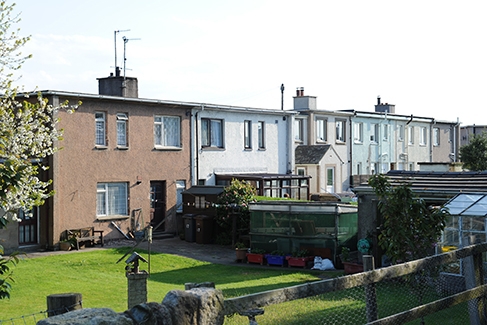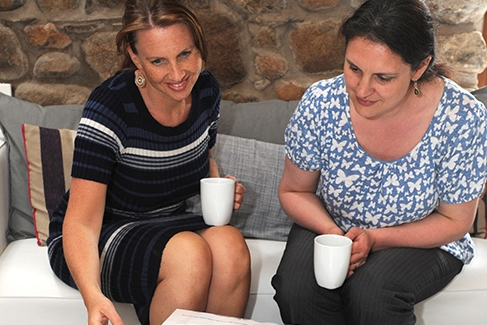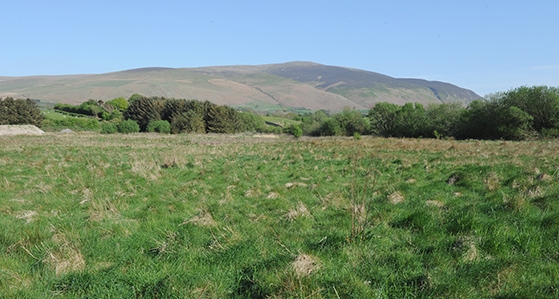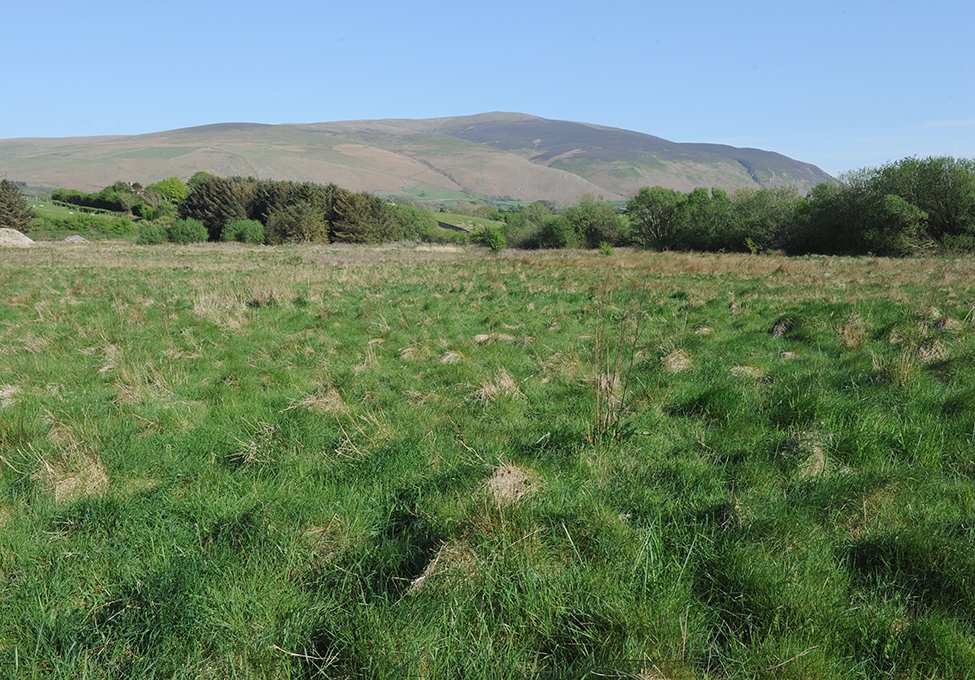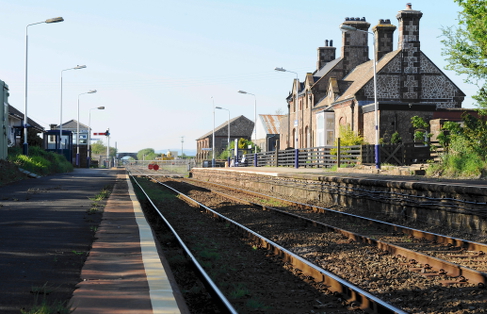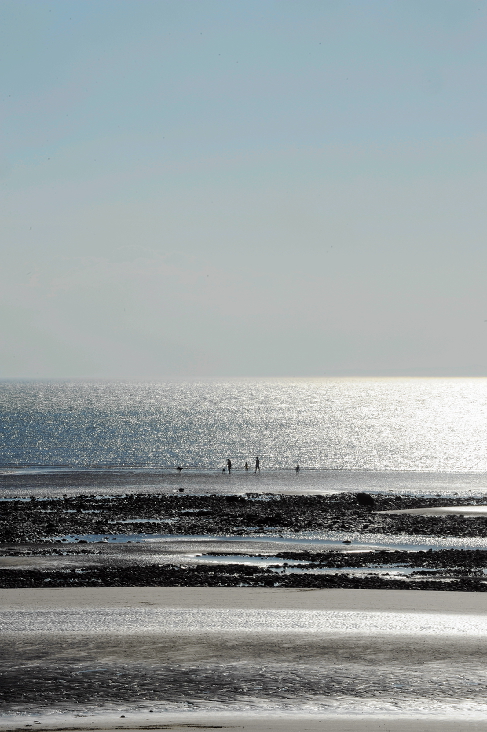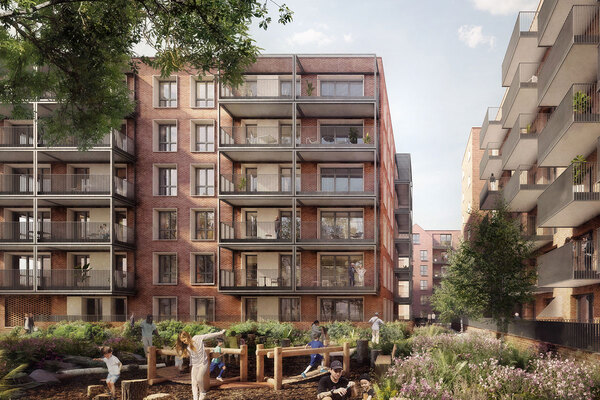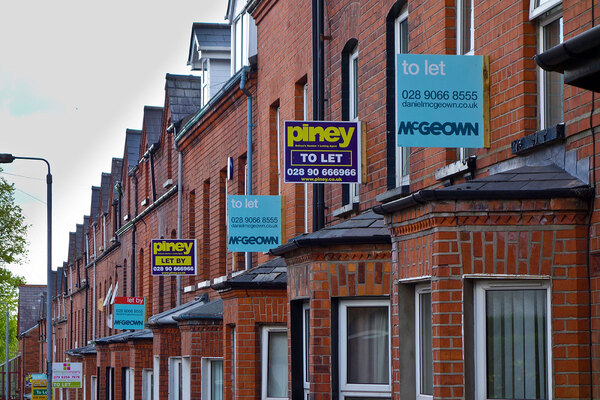Why Bootle’s building on this national park
Building in national parks is usually met with firm opposition from residents. One Cumbrian town is breaking the mould. Emily Twinch finds out why
Video:
features code

In a small Cumbrian community, villagers, the council and national park planning authority have united behind plans to build 50 homes and a 40-bedroom hotel.
“It is an ambitious project that will breathe new life into the village.”
Mike Starkie, mayor of Copeland
Planners unanimously approved a mix of full and outline planning consent for the Wellbank development in February, and developers hope work will start on the first phase this year, with the whole project finished by 2020.
But this happy union between stakeholders is rare. When developers try to build in national parks, they are often met with opposition.
In December, South Downs National Park Authority granted joint venture Santon North permission to build 416 homes - 40% of them affordable - in the Phoenix Quarter of Lewes. But this was after hundreds of protestors marched against the plans.
Video:
Ad slot
Locals backed a different masterplan for the 15-acre site by community development company Lewes Phoenix Rising, and say the developer’s proposals “fail to respond to the town’s vision for its future”.
Earlier this year, Conwy Council councillors rejected a Beech Developments plan for 93 homes on the edge of Snowdonia National Park amid cheers from the public gallery. The politicians went against the planning officer’s recommendations to approve the plans, for a variety of reasons including that they did not think the roads could cope with the extra people.
In Bootle the story couldn’t be more different. Set in the rolling hills of Cumbria, surrounded by great walking areas and popular bike tracks, Bootle is nestled in some amazing countryside, including the well-known Black Combe mountain.
But at its heart this is not the ‘chocolate box’ village you might imagine.

Social housing in the centre of Bootle
Many of the existing homes in the centre of the village are tired-looking social - or ex-social - homes, built in the 1950s.
The villagers are determined to change that. They want a vibrant village with modern, super-environmentally-friendly homes - which they believe Wellbank, set away from the village’s centre, will deliver.
Bootle lies in the Copeland borough, and mayor Mike Starkie says of the scheme: “It is an ambitious project that will breathe new life into the village. The project is very exciting for residents and the area as a whole.”
David Scott, who has owned Bootle’s local shop and post office for the past 35 years, says: “It’s a brilliant idea and I can’t wait to see it come to fruition.”
“We had a community that was struggling to survive. I am certain in my mind it was the right decision to make.”
Mike McKinley, chair, Lake District National Park
Demand is high to build homes, particularly affordable housing, around national parks. Homebuyers pay £101,880 extra on average in national parks - a premium of 44%, according to research by Lloyds Bank published last November.
Strict rules
National park communities often have dwindling and ageing populations - as is the case in Bootle.
Without more homes to bring more residents into the village, services are under threat. But planning rules around national parks are strict.
The National Planning Policy Framework advocates major developments in these areas in only “exceptional circumstances”.
National park planners have their own policies and rules, which can be restrictive as they must make protecting the natural environment the priority. A Lake District National Park policy is that new build homes should be for local or nearby local residents - a rule followed by other national parks.
National parks facts and figures
- There are 10 national parks in England, three in Wales and two in Scotland, covering 9.3%, 19.9% and 7.2% of the land area of each country respectively
- National parks were started in the 1950s to protect the countryside, wildlife and heritage of these areas
- The National Parks and Access to the Countryside Act 1949 (Section 11A) makes it clear the priority for national park authorities - where there is a conflict in its duties - is to give “greater weight to the purpose of conserving and enhancing the natural beauty, wildlife and cultural heritage”
- The National Planning Policy Framework states planning permission for major developments in national parks should be refused “except in exceptional circumstances and where it can be demonstrated they are in the public interest”
- Each national park is a statutory planning authority with its own Local Plan; districts can devise neighbourhood plans that can be incorporated into that if they are voted on unanimously following local consultation, independent examination and a referendum
- Lake District National Park is the largest national park in England stretching across 2,292 square kilometres, and only three settlements have more than 3,000 inhabitants: Keswick, Ambleside and Bowness-on-Windermere
- 17.7% of existing housing stock in the Lake District National Park are second or holiday homes; the median house price in the park in 2012 was £254,477
- In 2012/13, Lake District National Park planners granted permission for 172 new homes, comprising 82 local needs and 90 local affordable needs units
But in the case of Bootle, planners made the rare exception of relaxing that policy. So how has Bootle overcome these challenges and won widespread support?
Mike McKinley, chairman of the Lake District National Park, says: “The national park members are very impressed by the Bootle community spirit and the determined vigour with which they go about things.
“We had a community that was struggling to survive. I am certain in my mind it was the right decision to make.”

Inside Housing’s Emily Twinch meets Bootle 2020 project manager Trudy Harrison
One of the main factors in the scheme’s success so far is the drive and commitment of Trudy Harrison, the project manager of ‘Bootle 2020’, which Wellbank is part of. The project’s aim is to see the population of the village rise from the current 760 to 1,000 by 2020.
Her enthusiasm spills over to other members of the community. As chair of governors at the local school, she helped hire Pete Mills, the young bass guitar-playing headteacher of the local primary school who, since starting in September last year, has wasted no time in helping bring together the Bootle community and putting the village on the map. He has co-organised an arts and music festival in the village, Rock The Fells.
“A lot of people would not have stayed in Bootle if the school had closed.”
Trudy Harrison, project manager, Bootle 2020
Ms Harrison moved to Bootle in 2002 in search of the idyllic country life and became involved in turning the village’s fortunes around in 2011, after Cumbria County Council threatened the primary school, Captain Shaw’s, with closure after the number of pupils hit a low of 15. All four of her daughters have attended the school.
In 2012, Ms Harrison, along with a group from the community, managed to persuade the local authority to keep Captain Shaw’s open.
It now has 25 pupils - the aim is to increase that to 35. “A lot of people would not have stayed in Bootle if the school had closed,” she states.
The school is the heart of the community, she explains, but has been losing pupils since it was first built by the Victorian philanthropist Captain Shaw in 1829 for 140 pupils.
Bootle - which is mentioned in the Domesday Book - was then a thriving market town. It was boosted in World War II when an accommodation base was built for the troops on the Wellbank site. After 1950, the plot housed workers from the construction of the nearby nuclear fuel reprocessing site, Sellafield (opened in 1956), and a naval training camp. But when the camp was abandoned in the 1990s, Wellbank, and so Bootle, went into real decline. Since then the village has been struggling to survive as a community, seeing shops and its local pub close.

Bootle train station - the village was mentioned in the Domesday Book
In 2010, Ms Harrison went to work as a regeneration officer for Copeland Council, got a foundation degree in sustainable communities and in 2011 presented the Bootle Community Action Plan, which included a suggestion to redevelop Wellbank.
Two investors were interested - David Nuttall and Mark Frost, directors of Barden Energy, among other things - and as FNS have so far invested £700,000 in the Wellbank project. Ms Harrison now dedicates her time to project-managing Bootle 2020 through her own company, Trudy Harrison Limited.
“Bootle is an incredibly proactive and forward-thinking little community. As investors we look for a spark and commitment - and in Bootle we have found that,” Mr Nuttall explains. Being part of the project is “above all fun and we’re very proud to be a part of their journey”, he adds.
The entrepreneurs hope the project will become a “beacon of hope to other off-gas rural communities”. Under their patronage, it has become an eco-project, with the homes intended to be as eco-friendly as possible, with an Energy Performance Certificate rating of A. A district energy system is being considered.
Community feel
Architect Martin Howell designed the layout with community in mind. The site is low-density - the investors could be making much more money from it, he says - but “the basis for this scheme was very different”. It is to create a sustainable community encompassing business and leisure facilities, Mr Howell states.
In 2011, Bootle 2020 secured £300,000 from the Homes and Communities Agency to build a small 14-home estate of affordable homes in the village, owned and managed by Impact Housing Association.

Bootle by the sea
Now Ms Harrison says the village lacks homes to buy, which she hopes would encourage families to move in to create a sustainable community - and, of course, fill the school. All of the homes in the Wellbank development will be for sale, with 12 of them shared equity. The project still has to decide on which social landlord to work with for the shared equity homes, but have chosen Bay Construct as the builder.
Five homes have already been reserved. Ms Harrison, her four daughters and husband are taking one of them. “I have to go all the way with it,” Ms Harrison explains. Another has been taken by Emma and Paul Dyson, with their two children and dog. The family are hoping to move from the nearby town of Millom to live in a place “with more of a community”.
Detailed plans for the homes have still not been drawn up, and Ms Harrison takes on board the Dysons’ suggestions - often sent to her via Pinterest. Ms Harrison is hoping to attract workers to Bootle from Sellafield 16 miles away and the proposed new nuclear plant of Moorside about 24 miles away.
“They will have less travelling time from Bootle and can contribute to the community rather than just leaving their carbon footprint,” she says. At the moment, the cars drive through Bootle on the way to Sellafield.
There is a concern second-homers could snap up the homes, as they often do in national park areas, which Ms Harrison says she would be “very disappointed” about.
But the planners have stipulated that occupants of the new homes must use it as their local residence - which is defined as living in it for six or more months in a year.
And what of the future for national parks across the UK?
During the passage of the Housing and Planning Bill - which was given Royal Assent on 12 May - organisations such as the Campaign to Protect Rural England (CPRE) were calling for rural areas - including homes in national parks - to be exempt from the extended Right to Buy (the House of Lords won a concession, which meant homes in such rural areas can be exempt from this policy).
Emma Marrington, senior rural policy campaigner at CPRE, says: “St Ives residents have recently used neighbourhood planning to determine the type of new homes needed for their community, while peers have worked to secure a pledge from government to exclude national parks and AONBs [areas of outstanding natural beauty] from the forced sale of council homes. We await further regulations from government on how these existing affordable homes will be protected, but both of these steps are generally positive.
“We all want a thriving, living countryside,” she says. “And to achieve this, housing must be affordable for people who live and work in national parks.”
Clare O’Connor, external relations manager with the National Parks umbrella body, points out Lynton and Lynmouth in Exmoor National Park have banned people buying second homes through their neighbourhood plan. Outside the national parks, St Ives made a similar move.
She feels the local planners are often blamed for the lack of new homes being built in national parks but says “we help where we can”.
“The issue often is that builders are not interested in developing affordable houses and sometimes obtain planning permission, but then don’t go on to build them as there’s not sufficient profit in them. Or if they are developed with housing associations, mortgage companies don’t like lending on them,” she adds.
So the issues remain of unaffordability and dwindling populations in many national park communities.
To solve this, new homes must be built in these areas, and curbing the sale of properties through the Right to Buy and for second homes do seem to be ways of tackling the problem.
But certainly, Bootle shows the power of community involvement in making a success of national park development.
If communities were able to have a greater say or control in development in national parks, the issue of resistance to development in these areas would no doubt be lessened.
UPDATE at 10.22am on 6.7.2016
Originally this article stated that the government had agreed a rural exemption for Starter Homes. This was an error, the exemption applies only to the extension of the Right to Buy to housing associations.
